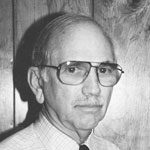
Perhaps we should change the name of the Gulf of Mexico to the “Gulf of Plastics,” according to a survey made by Mark Benfield, an LSU oceanographer.
The survey, which was the first made on the amount and types of plastic in our gulf, showed concentrations of plastic there among the highest reported anywhere in the world.
It puts the figure for our state on a par with those highest numbers reported elsewhere, compared with that of the Mediterranean and Black Seas and the mouth of China’s heavily polluted Yangstze River.
“It was a surprise,” Benfield reported in The New Orleans Times Picayune this past week. “I didn’t expect that the Gulf would have as much plastic as it did.”
He reported that the survey team found plastic every time they dropped a net or bottle into the water to check it out. They ended up pulling out soft drink bottles and other floating garbage. Most of the catch, however, was made up of large plastic items.
Plastic has a very long life, he pointed out. “It breaks down, but the particles persist.”
The LSU survey team started collecting samples of discarded materials from four locations in the Gulf in 2015. Benfield reported that compared to other places in the U. S., the numbers from the area his team surveyed are higher than that from anywhere else. He pointed out that the Mississippi River drains a huge part of the country, much of which ends up in the Gulf of Mexico.
“That includes a lot of cities, towns, streets and streams – and a lot of plastic.”
The survey team caught some small fish from Terrebonne Bay.
“We opened them up and their stomachs were full of plastics,” said Benfield who wants to know how much plastic is ending up in fish, oysters and other popular seafoods from the Gulf.
According to a recent article by Benfield, he has moved his survey into the Mississippi River. “There is a lot of plastic in the river”, he said recently. And there is a heck of a lot going into our estuaries and the Gulf.”
That, plus the many dead zones that flow along the Gulf Coast brought by the tons of nitrogen and phosphorus used in fertilizers at farms up and down the banks of the Mississippi River don’t much help to make our seafood paradise any better to improve the health of our seafood.
Perhaps we need to start studying how we can make our great coastal and seafood paradise that has served us so well in the past continue to do so.





Be the first to comment